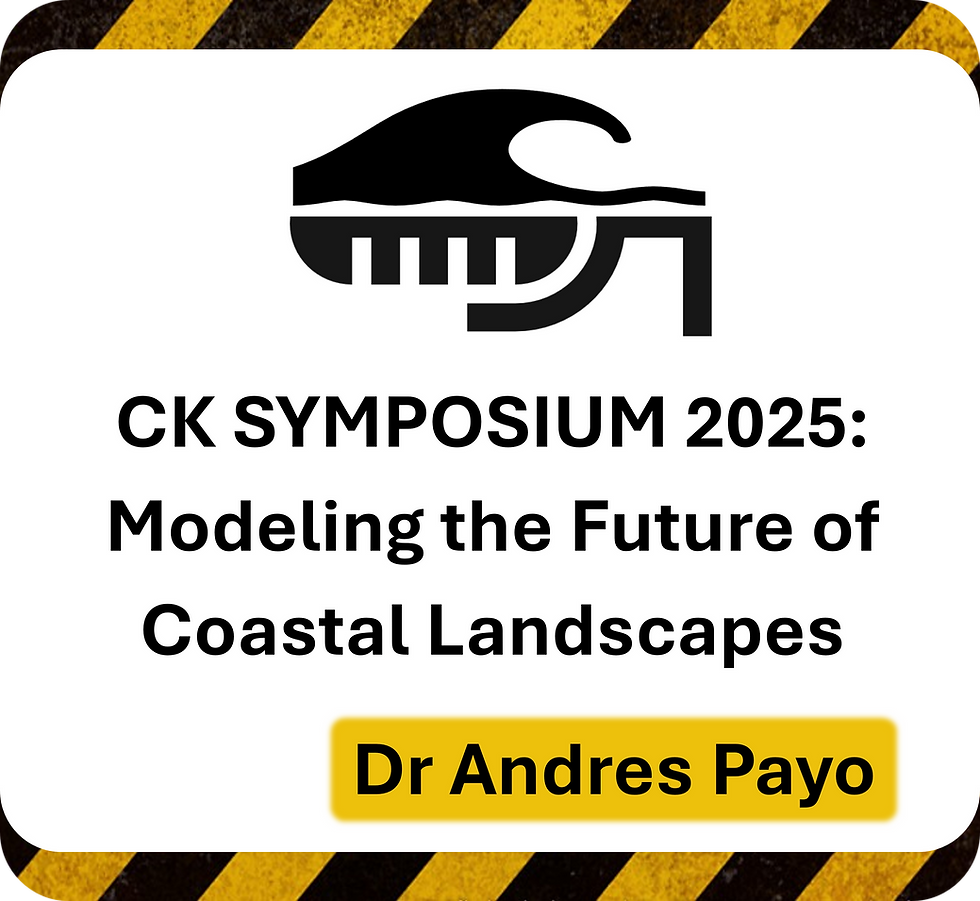#9 🎨 Insights from the Cuchlaine King III Symposium
- payoandres

- Sep 24
- 2 min read
Updated: Oct 5

Introduction: At the recent Cuchlaine King III Symposium, I had the opportunity to present on the evolution of numerical predictions for earth surface processes over the next 50 years. This episode captures the essence of my presentation, highlighting the collaborative efforts of global researchers in the ICOAST project. 🌍
The ICOAST Project and Its Goals: The ICOAST project is a collaborative effort that brings together researchers from around the world to develop simulation models for coastal landscapes. These models are designed to help decision-makers understand how coastal areas might evolve under different climate and management scenarios. By focusing on specific locations, such as the coast of East England, we aim to provide valuable insights into how infrastructure and assets might be affected by coastal flooding and erosion. 🏖️
Challenges in Coastal Modeling: One of the key challenges in coastal modeling is understanding the complex feedback loops that control how landscapes evolve. During the symposium, I discussed the importance of identifying these feedbacks and incorporating them into our models. This is crucial for creating accurate predictions and helping decision-makers plan for the future. The symposium also highlighted the need for community efforts and collaboration to advance environmental modeling. 🔄
The Role of Community and Collaboration: Collaboration is at the heart of the ICOAST project. By bringing together experts from various fields, we can develop more comprehensive models that take into account a wide range of factors. This community-driven approach is essential for tackling the complex challenges of coastal modeling and ensuring that our models are as accurate and useful as possible. 🤝
Digital Twin Technology and Future Prospects: Digital twin technology holds great promise for the future of coastal modeling. By creating virtual replicas of real-world environments, we can simulate and analyze how different factors might impact coastal areas. This technology has the potential to revolutionize the way we approach environmental modeling and provide valuable insights for decision-makers. 💡
Conclusion: In this episode, I emphasize the ongoing need for conceptual models and community collaboration to address complex environmental challenges. The Cuchlaine King III Symposium provided a platform for important discussions and highlighted the potential of digital twin technology in advancing coastal modeling. As we continue to explore the future of geomorphology, collaboration and innovation will be key to unlocking new insights and solutions. 🔑
References cited:
Payo, A.; Favis-Mortlock, D.; Dickson, M.; Hall, J.W.; Hurst, M.D.; Walkden, M.J.A.; Townend, I.; Ives, M.C.; Nicholls, R.J.; Ellis, M.A. Coastal Modelling Environment version 1.0: a framework for integrating landform-specific component models in order to simulate decadal to centennial morphological changes on complex coasts. Geosci. Model Dev. 2017, 10, 2715-2740, doi:https://doi.org/10.5194/gmd-10-2715-2017.
Payo, A.; Hall, J.W.; French, J.; Sutherland, J.; van Maanen, B.; Nicholls, R.J.; Reeve, D.E. Causal Loop Analysis of coastal geomorphological systems. Geomorphology 2016, 256, 36-48, doi:https://doi.org/10.1016/j.geomorph.2015.07.048.
Mao, Y.; Coco, G.; Vitousek, S.; Antolinez, J.A.A.; Azorakos, G.; Banno, M.; Bouvier, C.; Bryan, K.R.; Cagigal, L.; Calcraft, K.; et al. Benchmarking shoreline prediction models over multi-decadal timescales. Communications Earth & Environment 2025, 6, 581, doi:https://doi.org/10.1038/s43247-025-02550-4.




Comments